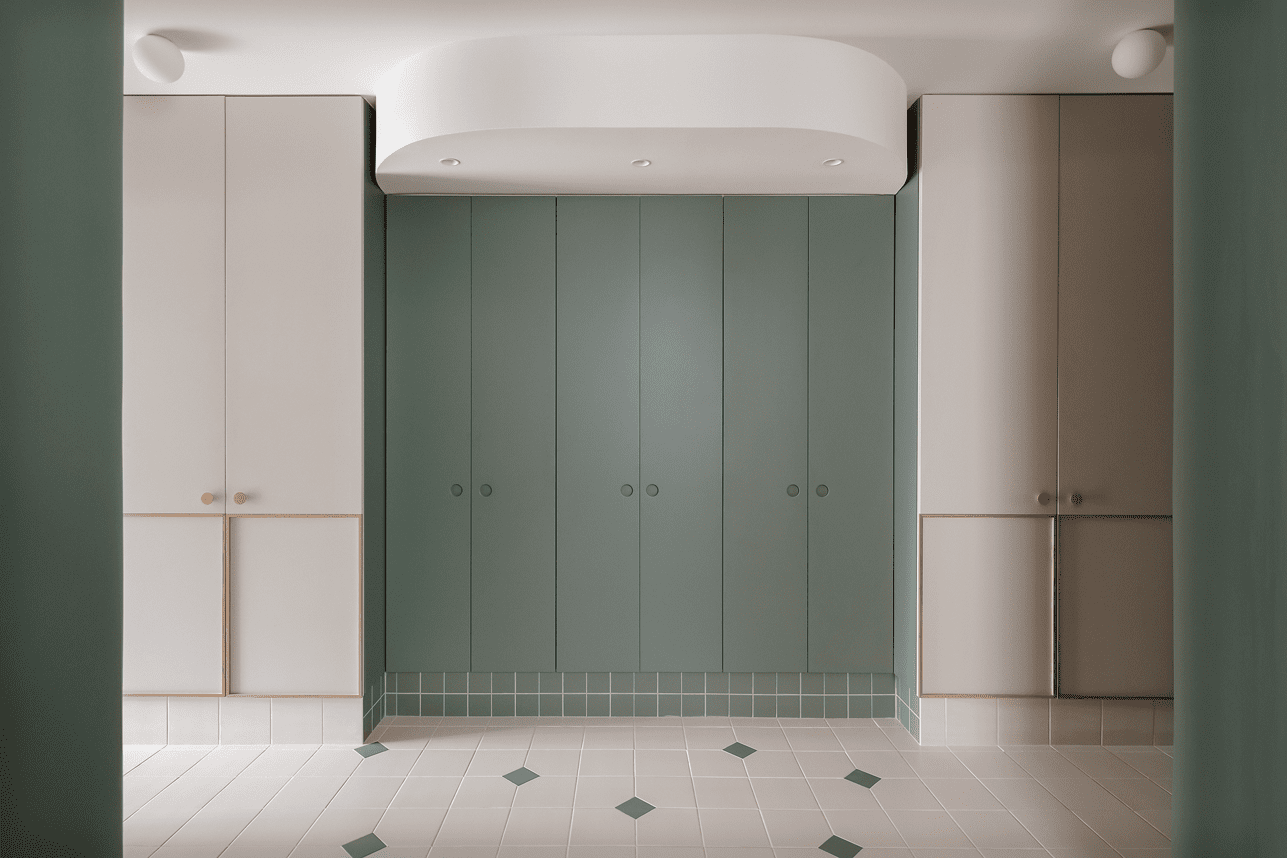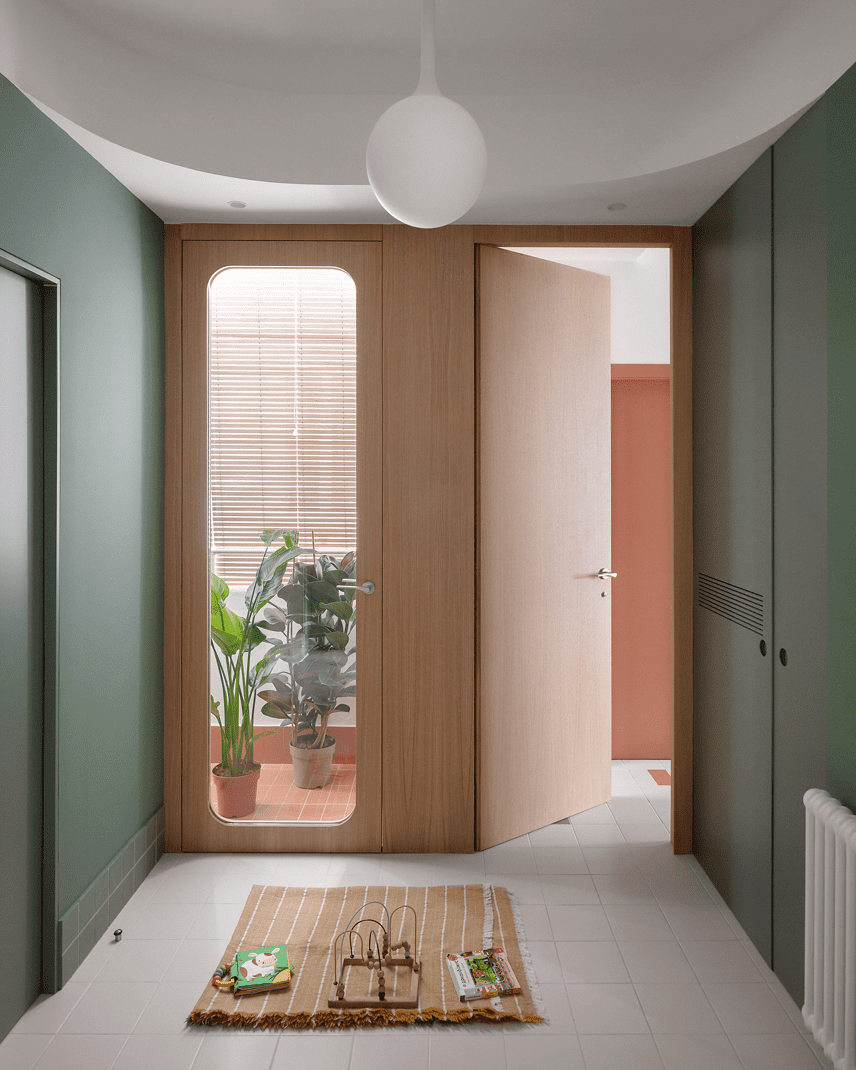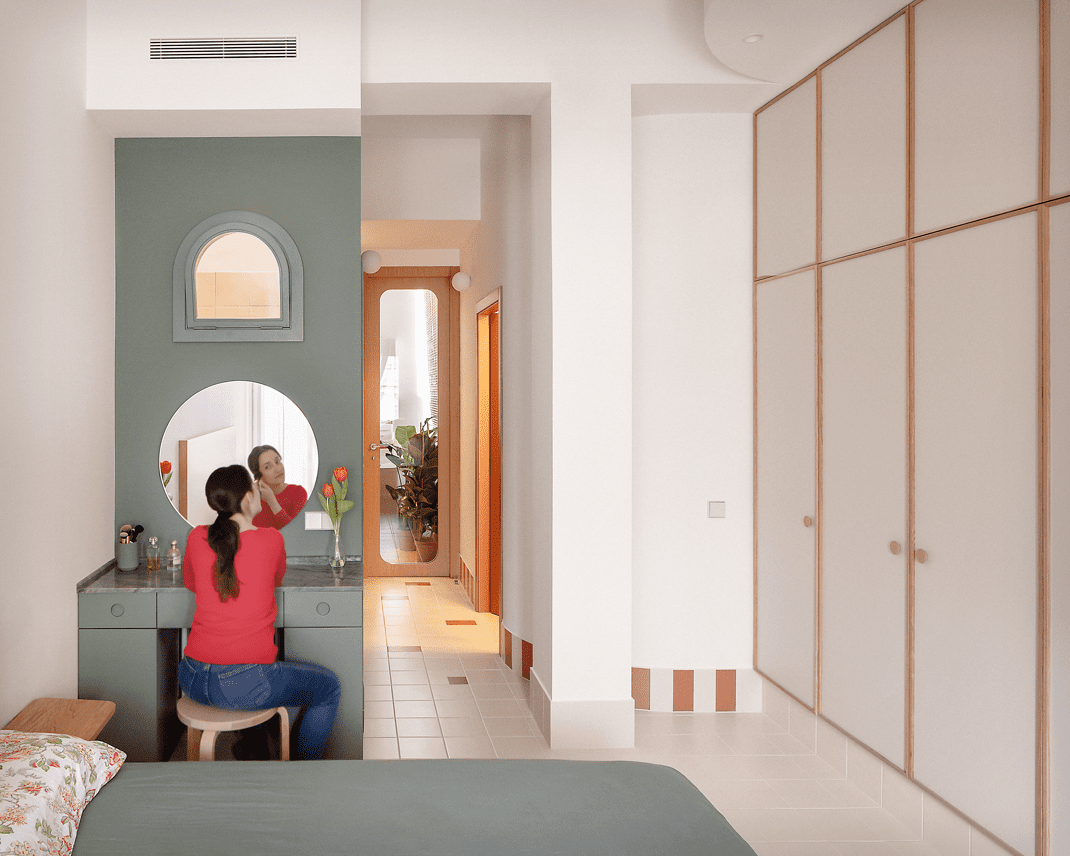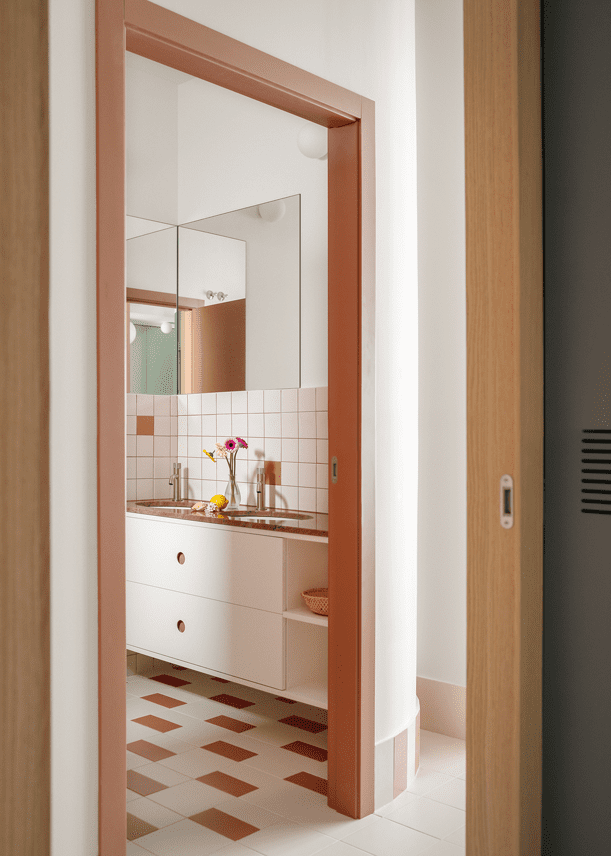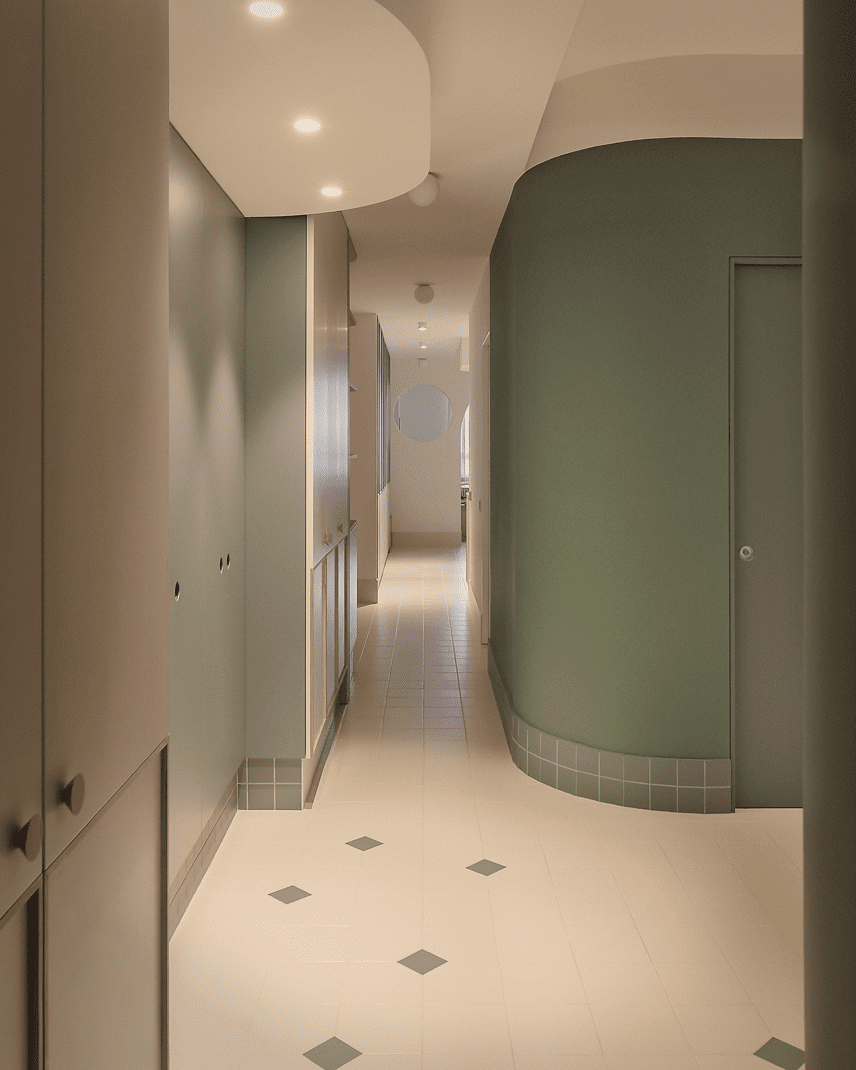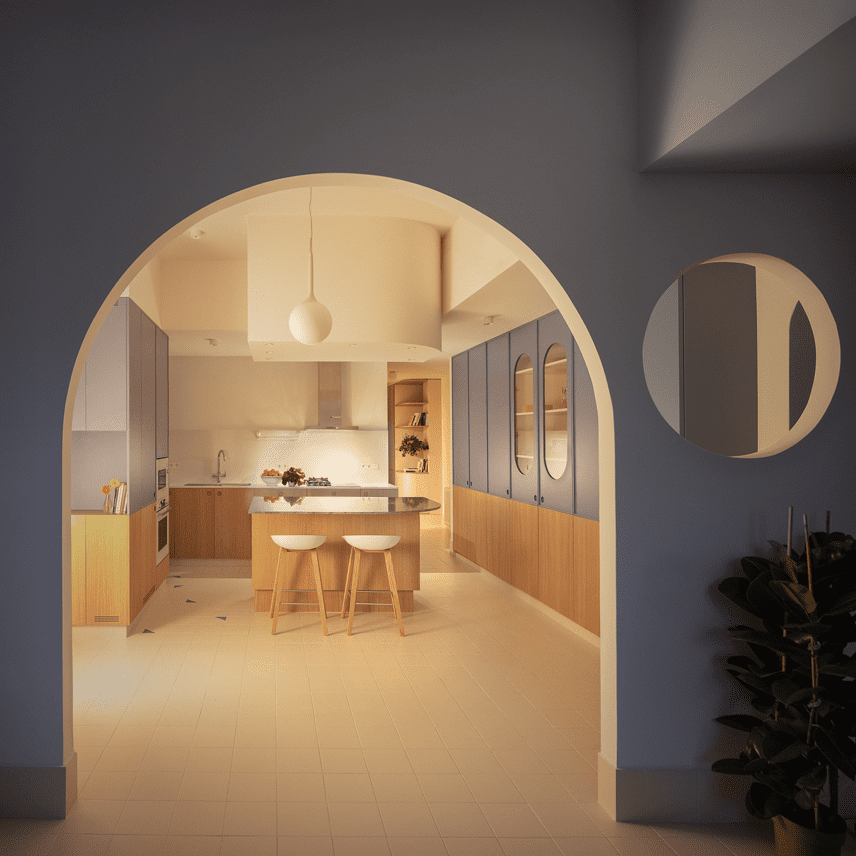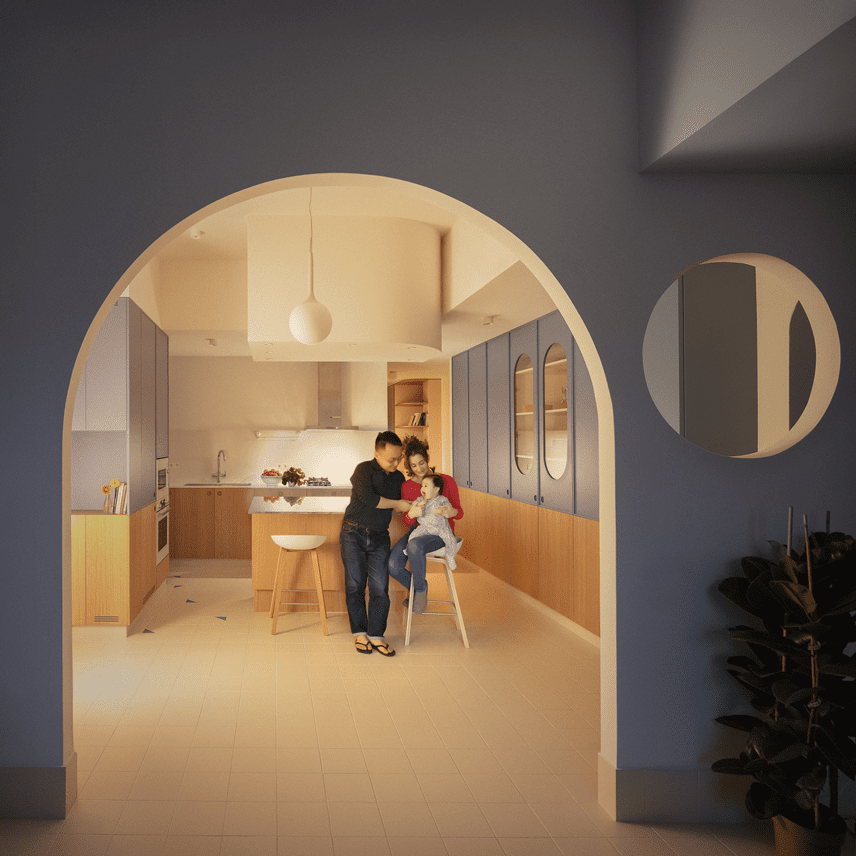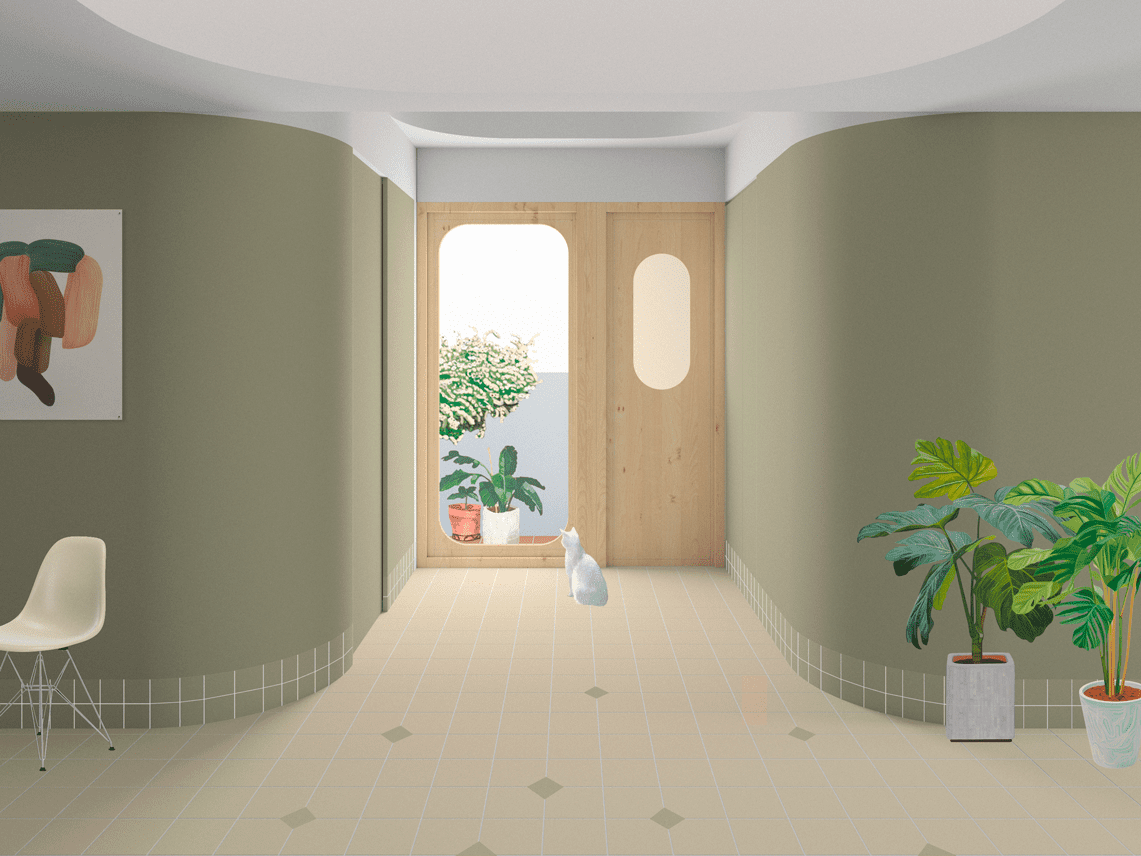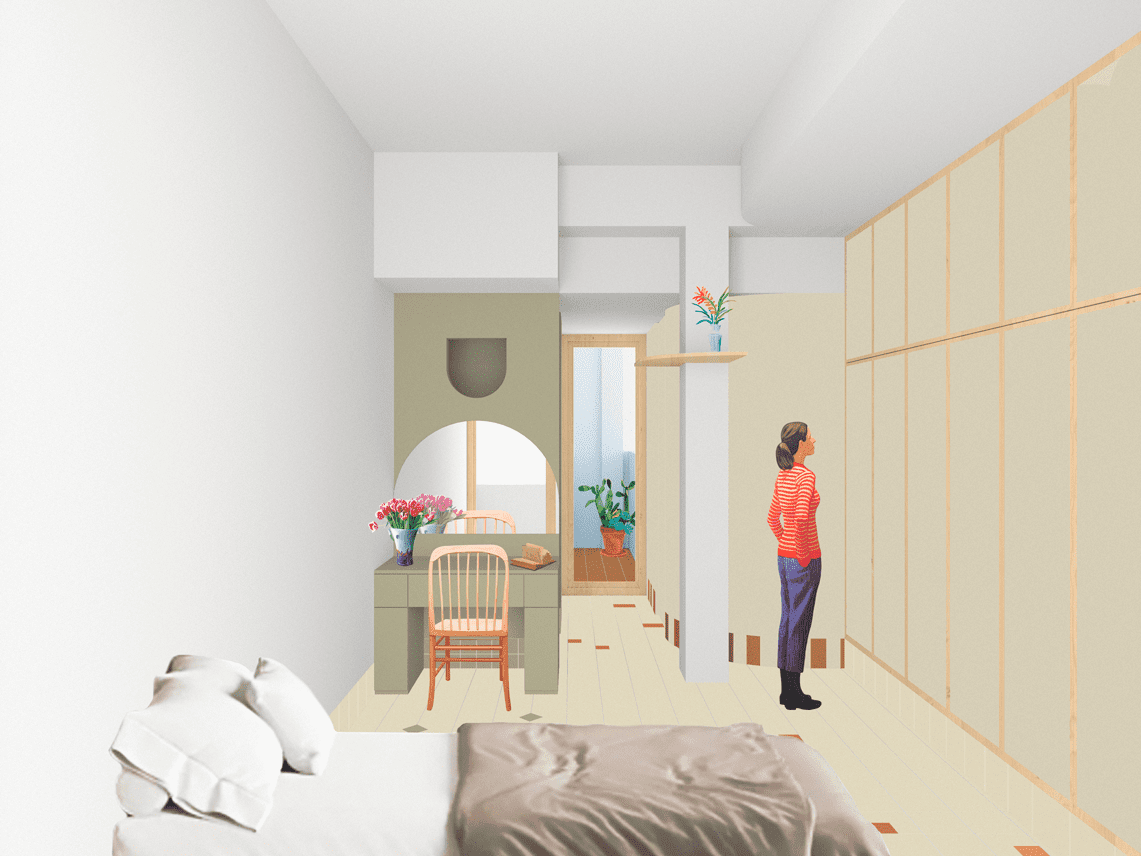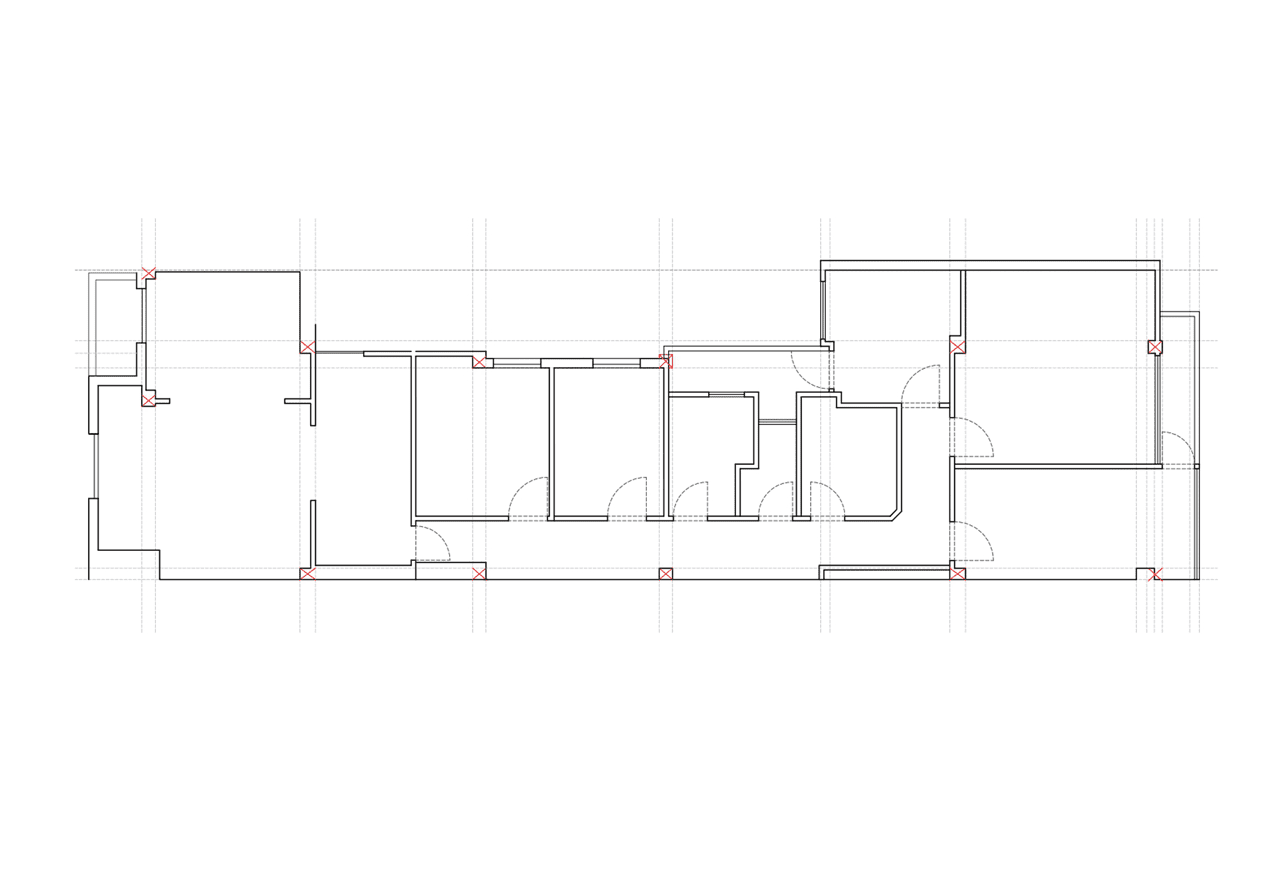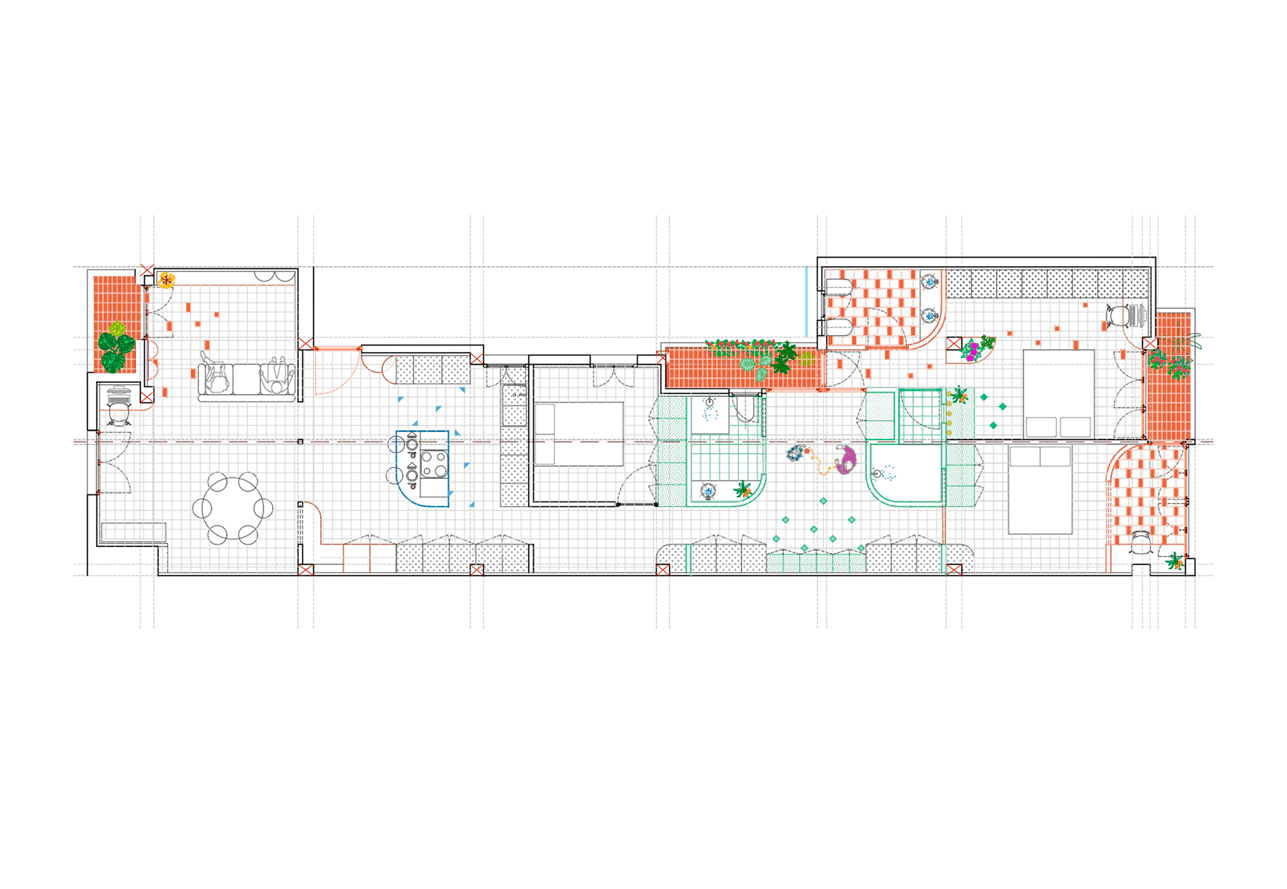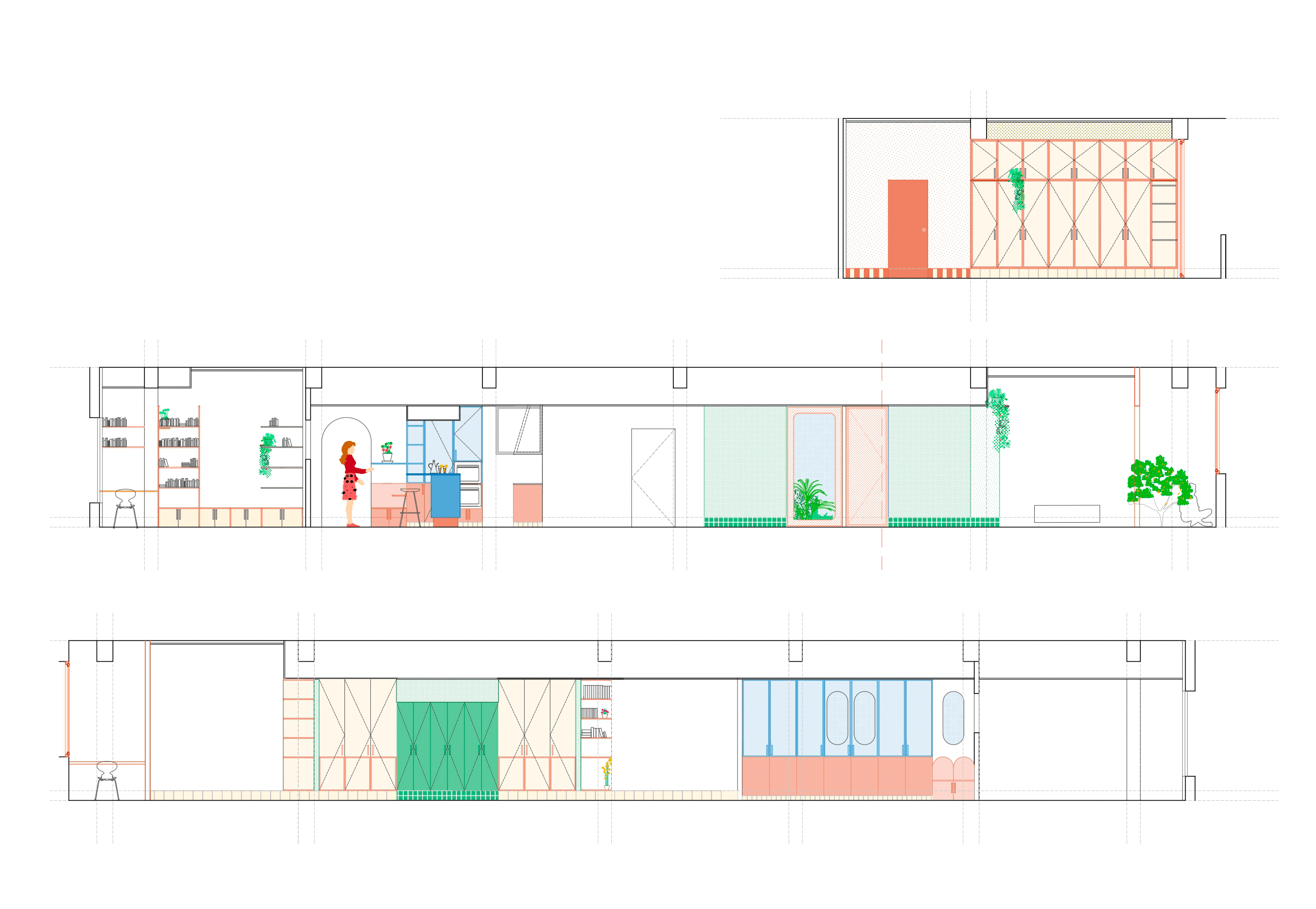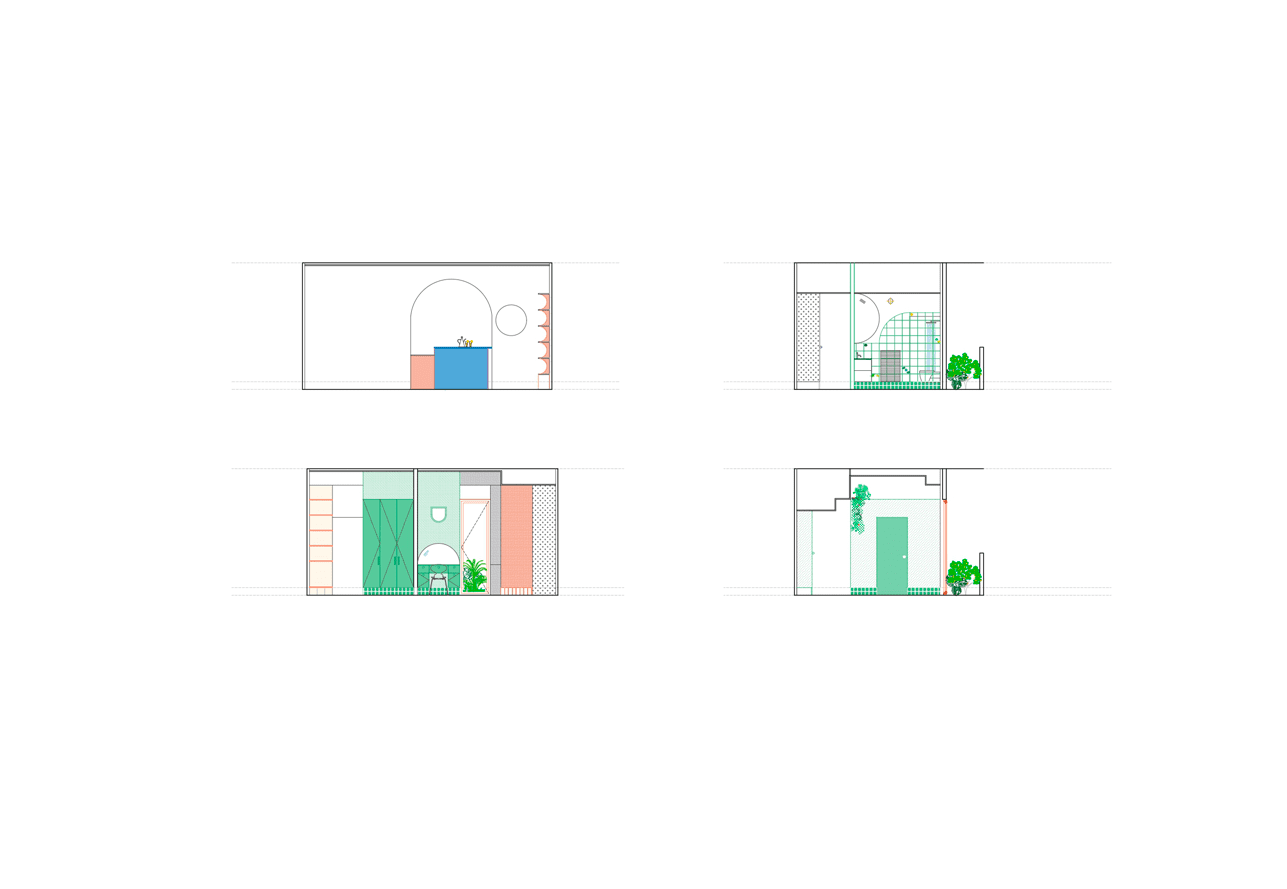The housing layout from the 1940s greeted us with a large hallway, from which one accessed a fragmented living-dining room. From this space, a long corridor extended, leading to the various rooms of the house, ending in the kitchen located at the end of the hall.
Maria and Ke arrived at Piano Piano with the goal of finding a renovation project that would suit their daily lifestyle habits: the need for two separate areas for remote work, a space to host family for extended periods, and a private area to rest and freshen up. Additionally, they were clear from the very first meeting that they wanted color to play a leading role in the design.
Our work as architects had the primary goal of breaking the long, narrow, and functionless corridor scheme to achieve a more flexible layout, where natural light and cross ventilation could flow freely.
To do this, two main zones were created at the ends of the apartment: a kitchen, dining, and living area connected to the entrance and the main facade, and a resting and bathing area, oriented toward the peaceful interior of the block. Between these zones, the corridor was blurred. While the more compact areas were filled with storage, the larger zone became a flexible and open space, ideal for a variety of activities at different stages of life: playing, ironing, or reading in a pleasant and tranquil way.
The future users were clear about what they wanted from Piano Piano: a meticulously controlled layout, geometry that allowed for endless views and circular paths, and a prominent role for color both functionally and spatially. Three carefully selected colors were incorporated into different areas, set against a homogeneous and neutral backdrop of 20×20 ceramic tiles. These colors were: a clean blue and a medium wood tone for the kitchen; a relaxing and calming green for the multi-purpose area and the bedroom; and a classic terracotta for the bathrooms and the threshold areas between the balconies and the interior spaces.

